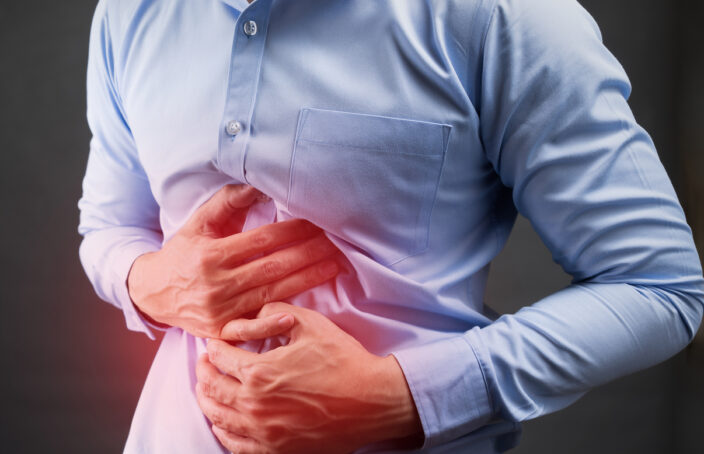Don’t Ignore Upper Stomach Pain (Here’s Why)
It was a crisp Monday morning when I first noticed the discomfort. A dull, nagging ache in my upper stomach that refused to subside. At first, I brushed it off as something minor—too much coffee, perhaps, or a skipped breakfast. But by midweek, that dull ache had evolved into something more persistent, an ever-present reminder that something wasn’t quite right.
What I didn’t realize at the time was that this wasn’t just a passing discomfort. It was my body waving a red flag, urging me to pay attention. Upper stomach pain can be more than just an inconvenience—it can be a symptom of something deeper. Whether it’s digestive distress, an inflamed organ, or even stress taking a toll on your gut, understanding what’s happening is crucial.
In this guide, we’ll explore why you should never ignore upper stomach pain, its potential causes, and how to address it with actionable strategies.
Why Upper Stomach Pain Deserves Your Attention
Pain is your body’s way of communicating. Upper stomach pain, in particular, can stem from various causes, some of which are benign, while others require immediate medical attention. It’s essential to listen to these signals rather than mask them with over-the-counter pain relievers or antacids.
Ignoring persistent upper stomach pain can lead to:
- Delayed Diagnosis: Identifying underlying conditions early can prevent complications.
- Chronic Symptoms: Minor discomforts can escalate into long-term issues if left untreated.
- Worsening of Conditions: Some causes of upper stomach pain, like ulcers or gallstones, can progress and become more serious.
Common Causes of Upper Stomach Pain
1. Acid Reflux and GERD
How It Feels:
A burning sensation in your upper abdomen or chest, often accompanied by a sour taste in your mouth.
Why It Happens:
Acid reflux occurs when stomach acid flows back into the esophagus. When it becomes chronic, it’s known as GERD (gastroesophageal reflux disease). Triggers include spicy foods, large meals, and lying down after eating.
Personal Experience:
There was a time when late-night snacking on chips and salsa was my guilty pleasure. But the fiery sensation I felt afterward was anything but enjoyable. Learning to swap those snacks for herbal teas and lighter options made a world of difference.
Actionable Tip:
Avoid trigger foods, eat smaller meals, and elevate your head while sleeping to prevent acid from rising.
2. Gastritis
How It Feels:
A gnawing or burning pain in the upper stomach, often worse after eating.
Why It Happens:
Gastritis is inflammation of the stomach lining, often caused by excessive alcohol consumption, prolonged NSAID use, or a bacterial infection like H. pylori.
Personal Experience:
When I first experienced gastritis, it felt like my stomach was staging a rebellion. Switching to a diet rich in anti-inflammatory foods, like oatmeal and steamed vegetables, helped soothe the inflammation.
Actionable Tip:
Stick to bland, non-irritating foods, and avoid alcohol and spicy dishes. If symptoms persist, consult a doctor to test for H. pylori.
3. Peptic Ulcers
How It Feels:
A sharp, burning pain that often improves temporarily after eating but returns later.
Why It Happens:
Peptic ulcers are open sores in the stomach lining or small intestine, caused by H. pylori or long-term NSAID use.
Personal Experience:
For weeks, I thought the discomfort was due to stress. But after seeking medical advice, I discovered I had an ulcer. Incorporating aloe vera juice and avoiding acidic foods became part of my healing journey.
Actionable Tip:
Avoid caffeine, alcohol, and NSAIDs, and consider incorporating soothing foods like bananas and probiotics into your diet.
4. Gallstones
How It Feels:
Intense pain in the upper right abdomen, often radiating to the back or shoulder, particularly after eating fatty foods.
Why It Happens:
Gallstones are hardened deposits of bile that can block the gallbladder’s ducts, causing inflammation and pain.
Personal Experience:
A particularly rich dinner left me doubled over in pain, leading to an ER visit and a gallstone diagnosis. Post-surgery, I learned the importance of a balanced diet and avoiding high-fat meals.
Actionable Tip:
Stick to a low-fat diet and incorporate fiber-rich foods like leafy greens and whole grains.
5. Pancreatitis
How It Feels:
Severe pain in the upper abdomen that may radiate to the back, often accompanied by nausea or vomiting.
Why It Happens:
Pancreatitis is inflammation of the pancreas, often triggered by gallstones, heavy alcohol use, or certain medications.
Personal Experience:
A friend’s sudden hospitalization for pancreatitis was a wake-up call. Seeing her recovery journey highlighted the importance of early intervention and avoiding alcohol.
Actionable Tip:
Seek immediate medical attention if you suspect pancreatitis. Recovery often involves fasting, hydration, and avoiding alcohol.
6. Stress and Anxiety
How It Feels:
A tight, cramping sensation in the upper stomach, often coinciding with stressful situations.
Why It Happens:
Stress triggers the release of cortisol, which can disrupt digestion and lead to discomfort.
Personal Experience:
During a particularly demanding work project, I noticed a knot-like pain in my stomach. Practicing mindfulness and incorporating chamomile tea into my nightly routine made a significant difference.
Actionable Tip:
Incorporate stress-relief techniques like yoga, deep breathing, and regular exercise to support gut health.
Natural Remedies for Upper Stomach Pain
While some causes of upper stomach pain require medical intervention, natural remedies can provide relief for mild or occasional discomfort.
1. Ginger Tea
- Why It Works: Ginger’s anti-inflammatory properties soothe the stomach and reduce bloating.
- How to Use It: Steep fresh ginger slices in hot water for 10 minutes.
2. Fennel Seeds
- Why It Works: Fennel relieves gas and calms the digestive tract.
- How to Use It: Chew a teaspoon of fennel seeds or brew fennel tea after meals.
3. Aloe Vera Juice
- Why It Works: Aloe vera has a cooling effect that reduces inflammation in the stomach lining.
- How to Use It: Drink 1–2 tablespoons of pure aloe vera juice daily.
4. Chamomile Tea
- Why It Works: Chamomile relaxes the stomach muscles and reduces spasms.
- How to Use It: Steep chamomile flowers or tea bags in hot water for 5–7 minutes.
When to See a Doctor
While occasional upper stomach pain can often be managed at home, certain symptoms require immediate medical attention:
- Severe, persistent pain
- Vomiting blood or black stools
- Unexplained weight loss
- Difficulty swallowing
Final Thoughts: Listen to Your Gut
Upper stomach pain is more than just an inconvenience—it’s your body’s way of signaling that something needs attention. Whether it’s a minor issue like acid reflux or a more serious condition like pancreatitis, understanding and addressing the root cause is key to long-term relief.
For me, learning to listen to my body was a game-changer. By combining natural remedies with lifestyle changes and, when necessary, medical intervention, I found a path to healing. If you’re dealing with upper stomach pain, don’t ignore it. Take action, explore your options, and trust that relief is possible.
Your health is worth it.


